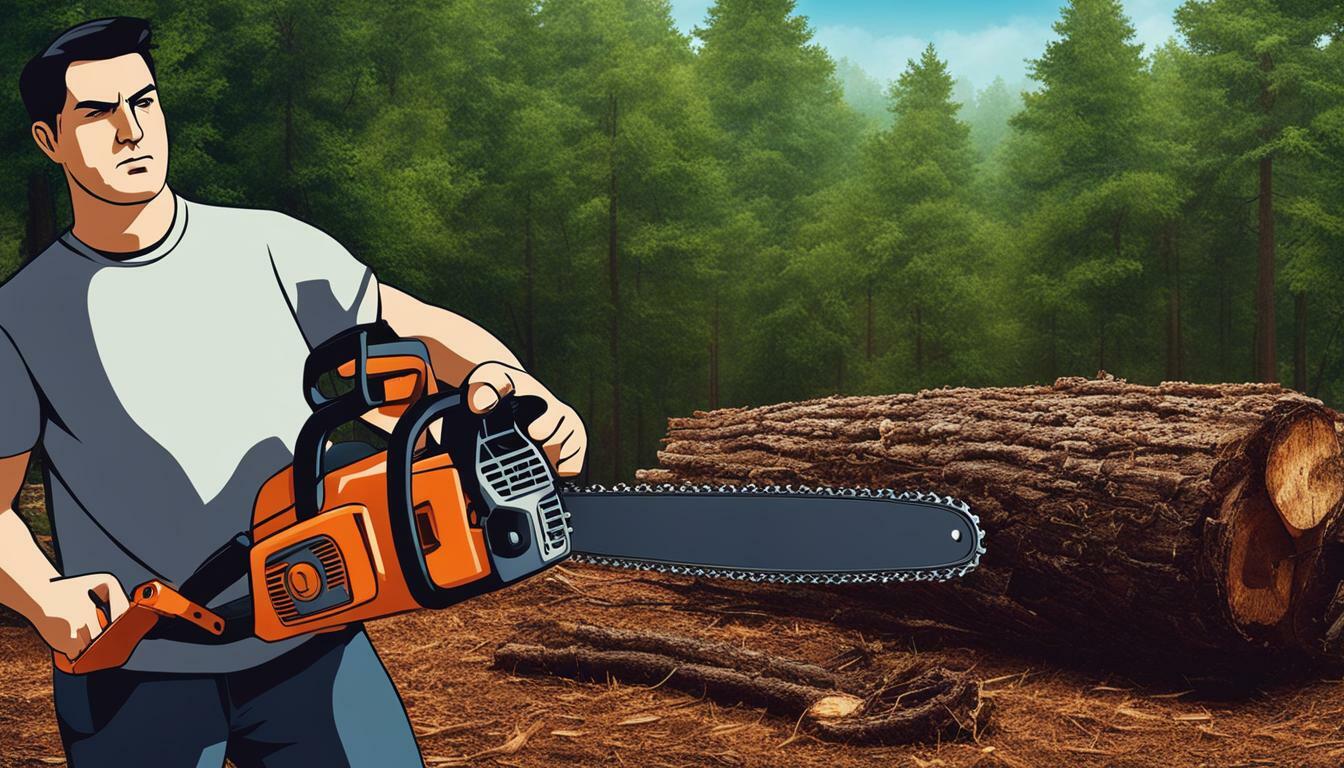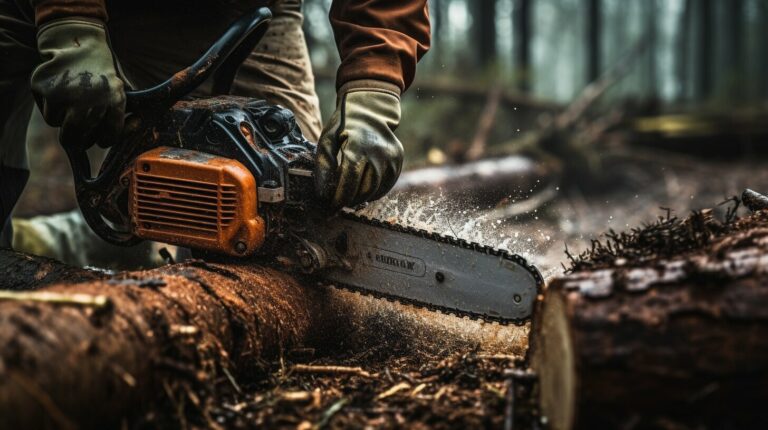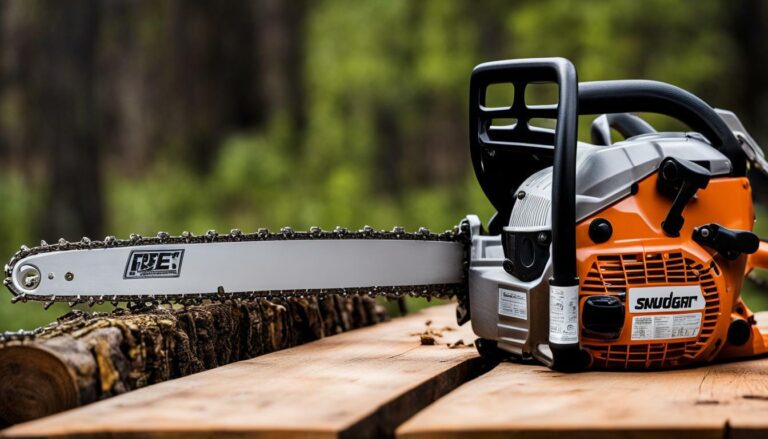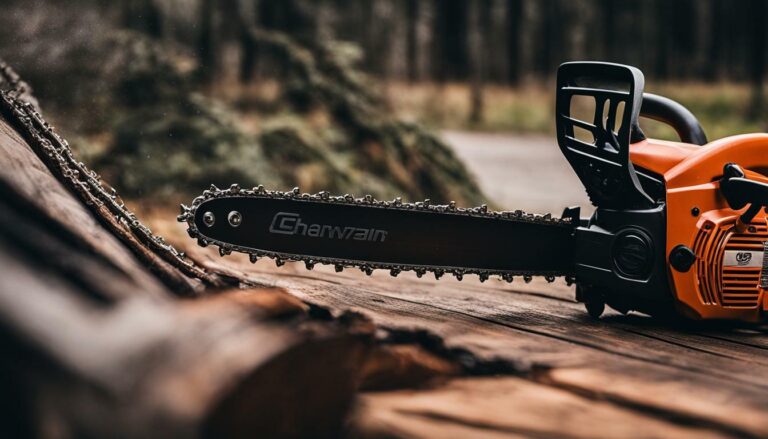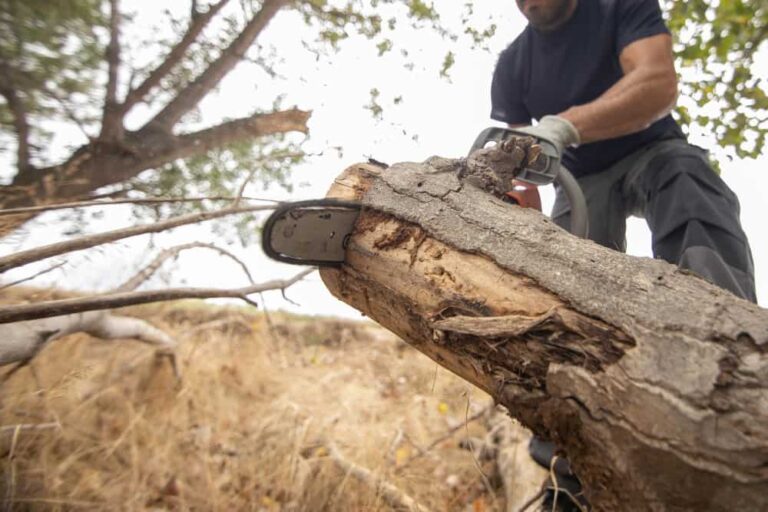Your Guide on How to Replace a Chainsaw Chain Easily
If you’re a chainsaw owner, you may need to replace your chainsaw chain at some point. While it may seem daunting, it’s a straightforward process you can do independently. However, it’s essential to follow the proper steps to ensure that the chain is installed correctly and that you’re using it safely.
In this section, we will provide you with a step-by-step guide on how to replace a chainsaw chain easily. You don’t need to be an expert to follow this guide – whether you’re a beginner or an experienced user, our guide will help you understand the process and ensure a smooth replacement.
Key Takeaways
- Replacing a chainsaw chain is a straightforward process you can do independently.
- Following the right steps is important to ensure the chain is installed correctly and you use it safely.
- Our step-by-step guide is suitable for beginners and experienced users alike.
- By following our guide, you’ll be able to replace your chainsaw chain easily and with confidence.
- Proper chain maintenance is crucial for a safe and efficient chainsaw operation.
Chainsaw Chain Replacement: A Step-by-Step Tutorial
Replacing a chainsaw chain requires proper maintenance techniques and careful attention to detail. Follow our step-by-step tutorial on how to replace a chainsaw chain and successful installation.
Step 1: Preparation
Before installing a new chainsaw chain, it’s important to clean it thoroughly and ensure all moving parts are free from debris or damage. Check the chainsaw bar for any signs of wear and tear, and replace it if necessary.
Step 2: Remove the Old Chainsaw Chain
Using a wrench, loosen the nuts on the chainsaw bar and remove the old chain. Take note of the orientation of the cutting teeth, as the new chain must be installed in the same direction.
Step 3: Measure and Adjust the New Chainsaw Chain
Measure the new chain against the old chain to ensure it’s the correct length. Adjust the chain’s tension by using the tensioning screw on the chainsaw bar until the chain fits snugly against the bar but still moves freely.
Step 4: Install the New Chainsaw Chain
Place the new chain onto the chainsaw bar, ensuring the cutting teeth face the correct direction. Carefully position the chainsaw bar onto the body and tighten the nuts until the bar is secure but not too tight.
Step 5: Adjust Chain Tension and Lubrication
Using the tensioning screw, adjust the chain tension again until the chain is tensioned correctly. Lubricate the chain with oil to ensure smooth operation.

Step 6: Test Run
Start the chainsaw and allow it to run for a few minutes, checking to see that the chain is moving freely and the chainsaw is operating smoothly. Make any necessary adjustments, and your chainsaw is ready to use!
Following these steps will help ensure a successful chainsaw chain replacement. With proper chainsaw maintenance and installation techniques, you can get optimal performance from your chainsaw and prolong its lifespan.
Troubleshooting Common Chainsaw Chain Problems
Chainsaw chains, like any other tool, can encounter issues that affect their performance. Here are some common chainsaw chain problems and their respective solutions:
| Problem | Solution |
|---|---|
| The chainsaw chain is not cutting properly. | It could be due to a dull chain or incorrect chain pitch. Sharpen the chain or replace it with the right pitch chain. |
| The chainsaw chain is overheating. | This could be due to insufficient lubrication or loose chain tension. Use the recommended lubricant, and check and adjust the chain tension as needed. |
| The chainsaw chain is jumping off the bar. | The chain tension might be too loose, or the chain might be damaged or worn. Adjust the chain tension or replace the chain as necessary. |
| The chainsaw chain is smoking. | Smoking could indicate insufficient lubrication or a damaged chain. Check the lubrication and replace the chain if necessary. |
It’s important to note that chainsaw chains require regular maintenance to ensure optimal performance. Check and clean the chain regularly and sharpen it as needed. Additionally, always wear appropriate safety gear, such as gloves and eye protection, when using your chainsaw.
By understanding these common chainsaw chain problems and their solutions, you can keep your chainsaw in top condition and prevent potential safety hazards.
Tips and Tricks for Replacing Chainsaw Chain
Replacing a chainsaw chain can be daunting, but with some helpful tips and tricks, it can become a much easier and smoother process. Here are some tips to assist you in your chain replacement:

- Always wear protective gear: Before beginning any chainsaw maintenance or repairs, remember to wear protective gear such as gloves, safety glasses, and earplugs.
- Read the manual: Make sure to read the manual and understand the process of chain replacement before starting the work.
- Choose the right chain: Ensure you have the right chain for your chainsaw and job. Consult the manual or a professional if you’re unsure.
- Loosen the chain tension: Loosen the chain tension before removing the old chain. This will make it easier to remove and replace.
- Check the bar: Before installing the new chain, make sure the bar is clean and in good condition. If it’s damaged, replace it before installing the new chain.
- Check the sprocket: Check it to ensure it’s clean and in good condition. If it’s damaged, replace it before installing the new chain.
- Install the new chain: Install the new chain according to the instructions in the manual. Make sure it’s tensioned correctly before tightening the cover bolts.
- Check the tension: After installing the new chain, check its tension. It should be tight enough to stay on the bar but loose enough to move freely.
- Test the chainsaw: Test it to ensure it’s running correctly before using it for any cutting tasks.
Following these tips can make the chain replacement process easier, safer, and more efficient. Always consult the manual and wear protective gear to ensure a successful and safe chainsaw experience.
Conclusion: how to replace a chainsaw chain
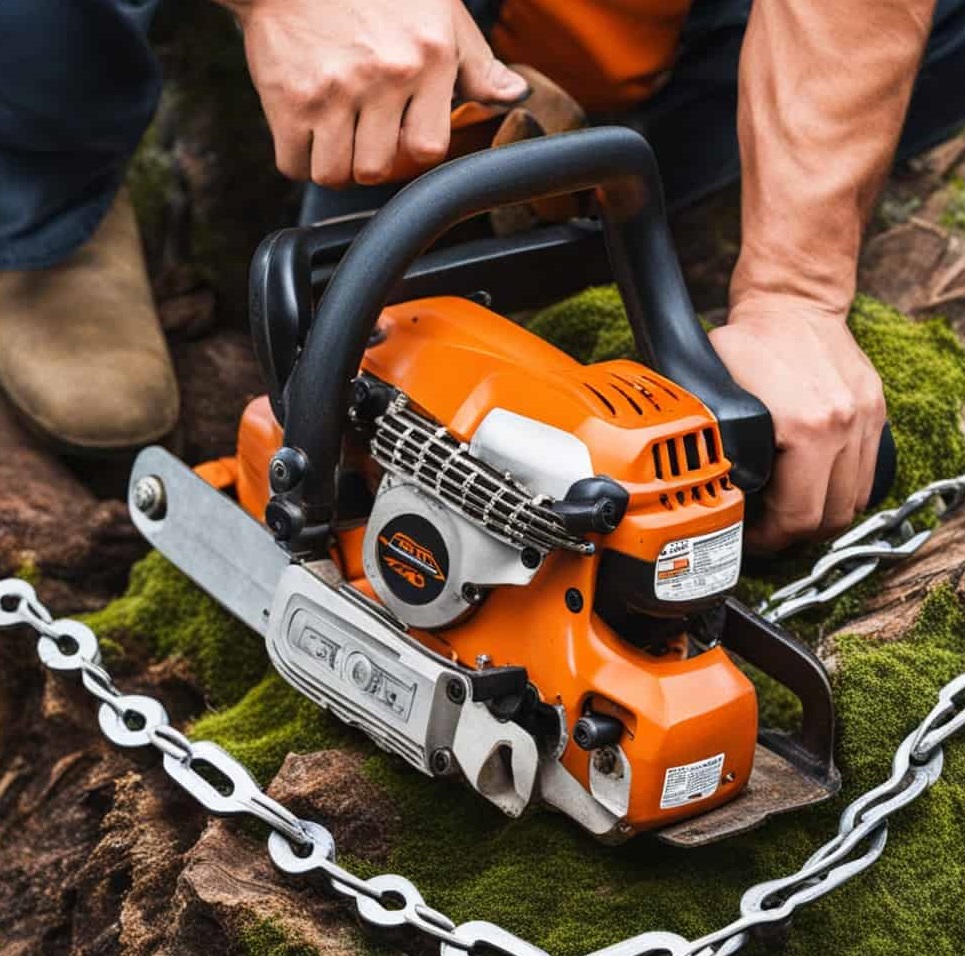
Replacing a chainsaw chain may seem daunting, but with the right know-how, it can be easy. This guide covers the necessary steps to replace a chainsaw chain, including maintenance, installation, and troubleshooting tips. By utilizing our easy-to-follow tutorial and taking advantage of our tips and tricks, you can ensure that your chainsaw chain replacement is successful but also safe and efficient. Remember, proper chain maintenance is crucial for your overall chainsaw operation. So, our chainsaw chain replacement guide covers you whether you are a beginner or an experienced user. Keep this guide handy, and you’ll be ready to tackle any chainsaw chain replacement task that comes your way. Thank you for choosing our guide on how to replace a chainsaw chain. Happy chainsawing!
FAQ
How often should I replace my chainsaw chain?
The frequency of chain replacement depends on several factors, including the frequency and intensity of use, the type of wood being cut, and proper maintenance. As a general guideline, replacing the chainsaw chain every 1,000-2,000 hours of use or when it becomes dull or damaged is recommended.
How do I know if my chainsaw chain needs to be replaced?
A few signs to look out for indicate your chainsaw chain needs replacement. These include excessive smoking, lack of cutting efficiency, difficulty making straight cuts, and visible damage or dullness to the chain’s teeth. Regular inspection and maintenance can help identify when it’s time for a replacement.
Can I sharpen a chainsaw chain instead of replacing it?
Yes, it is possible to sharpen a chainsaw fetter instead of replacing it. However, sharpening should only be done if the fetter is not excessively worn, damaged, or stretched. Sharpening should be done carefully and accurately using the appropriate tools and techniques to ensure optimal cutting performance.
What safety precautions should I take when replacing a chainsaw chain?
When replacing a chainsaw fetter, it is important to prioritize safety. Turn off the chainsaw and disconnect it from the power source. Wear protective gear, such as gloves and eyewear, to protect yourself from potential injury. Follow the manufacturer’s instructions and guidelines for safe chain replacement procedures.
Are there different types of chainsaw chains available?
Yes, various types of chainsaw chains are available, each designed for specific cutting applications and chainsaw models. The most common types include full-chisel chains for faster cutting in hardwood, semi-chisel chains for better durability in dirty or abrasive conditions, and low-kickback chains designed for increased safety and reduced kickback potential.
